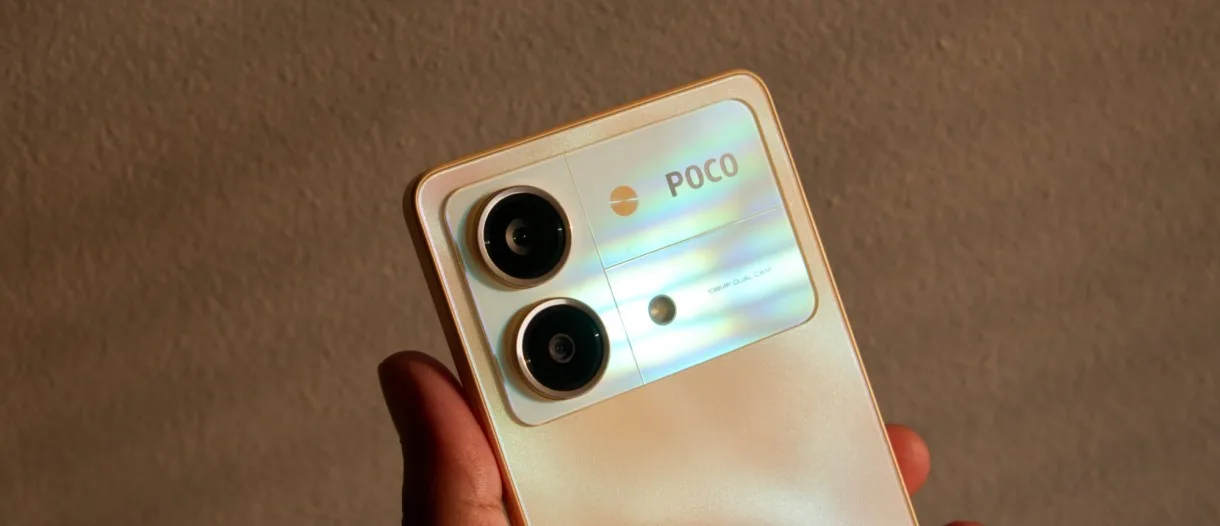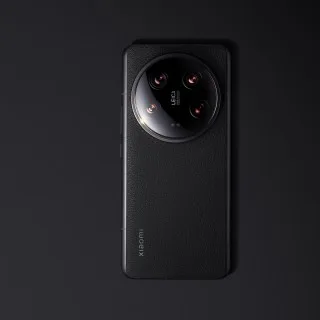The Poco X6 Neo is the most affordable model in the X6 series. The other models in the range, the X6 and the X6 Pro, borrow bits and pieces from Xiaomi's Redmi range of devices. However, the X6 Neo, for all intents and purposes, is essentially the Redmi Note 13R Pro with a different name. Since we haven't looked at that model either, this is a good opportunity to kill two birds with one stone, so to speak.

Being the cheaper model in the series, the X6 Neo loses some of the niceties of the more expensive models. You get a single usable camera at the back and the chip gets downgraded to a MediaTek Dimensity 6080. Still, there are some interesting things to look forward to, such as the design, which is claimed to be the thinnest for a Poco device, the 120Hz AMOLED display, and the lossless 3x zoom on the 108MP camera.
For a starting price of INR 15,999 (~$192), it is a fair bit cheaper than the X6 and X6 Pro. Let's see what you are getting for that money.
Unboxing
The Poco X6 Neo comes in the usual black and yellow Poco packaging. Inside, you will find the phone, a 33W charger, and a USB-A to USB-C cable.

A black silicone case has also been provided in the box. The case doesn't add much to the thickness of the phone and has a convenient cutout for the fingerprint sensor on the power button, which makes it quite easy to locate the button without looking. There's also a flap for the USB port that's a bit too stiff. However, the case leaves quite a large opening at the back for the camera for purely aesthetic reasons, which leaves the area exposed to damage.
Design
The design of the Poco X6 Neo is one of its standout features. As previously mentioned, this is claimed to be the thinnest Poco phone yet, and it shows. At just 7.7mm, the phone looks and feels very thin in hand. Even with the case on, the X6 Neo is thinner than some other phones without a case.

The X6 Neo is constructed entirely out of plastic, save for the Corning Gorilla Glass 5 on the front. However, the choice of materials makes the phone feel a lot nicer than you normally find in this price range.
The sides of the frame are perfectly flat with a matte texture. But it's the back that is the star of the show on this Martian Orange variant. The entire back has an iridescent glow and shimmer to it that moves as you move the phone under light in a way that is reminiscent of sand dunes. It's quite a fetching pattern that adds a lot of character to the phone's design. It is, however, limited to this specific color, as Astral Black and Horizon Blue finishes are quite plain.

Near the top of the phone is a large camera island as seen on other Poco X6 phones. Here you will find just two camera lenses, only one of which is really usable. Also present is an LED flash and a circular pattern, which is really just there for visual symmetry and isn't functional. The camera island on this variant also has an iridescent appearance like the rest of the back, but glossy instead of matte. The two lenses also have these beautiful glossy rings surrounding them.
As for the rest of the design, you get fairly thin and even bezels on the front with a subtle camera cutout at the top. All the physical buttons are on the right and on the top you will find a headphone jack and IR blaster.
The overall design of the X6 Neo is really nice and belies the pricing for the device. Even the little things like the way the front glass just melds into the side frame without a rubber edge like you'd find on a phone in this price range set it apart from the competition. It's also helped by a fairly sturdy build despite the plastic construction as well as IP54 dust and water resistance.
Display
The Poco X6 Neo has a 6.67-inch, 2400 x 1800 resolution AMOLED display with a refresh rate of up to 120Hz. The display has a claimed peak brightness of 1000 nits, 100% DCI-P3 color coverage, and 240Hz touch sampling rate.
Like other Xiaomi/Poco budget phones, you can do basic color tuning in the settings. By default, the phone is set to the Vivid profile, which claims to adjust colors based on the content displayed but has a cool blue white point. The Saturated profile is always saturated but has a warmer color tone. The Standard profile seems to target sRGB and has a standard D65 white point with natural colors. You can also adjust the color temperature for all three profiles manually using a color wheel.

In the Standard mode, the display has good color accuracy. The panel also has ample resolution and good viewing angles.
Peak brightness was usually sufficient but the way the automatic brightness works is a bit odd. On most modern smartphones, the display can go beyond manual brightness levels under bright light when using auto brightness. The X6 Neo, on the other hand, doesn't even reach the max manually adjustable brightness level even under the brightest sunlight, let alone go beyond that. You can get higher brightness if you manually max out the brightness instead. This was tested multiple times and at no point did the auto brightness ever max out the brightness under bright light, instead settling for around 90%.
On the topic of brightness, there is no HDR support on the X6 Neo.
Unfortunately, like some other Xiaomi/Poco phones, the X6 Neo has the company's distasteful video processing enabled full-time. Any time you start a video, the phone will automatically oversharpen it while also boosting saturation and contrast, and there's nothing you can do to turn it off.
Well, almost nothing. Thanks to a Reddit comment, we were able to disable this effect by going into the phone's Developer options and toggling the 'Disable HW overlays' option, which turns off all video processing. The only issue is that this option switches back when the phone restarts and needs to be enabled again.
The display can refresh up to 120Hz. The phone does actually run at 120Hz in most of the apps we tried, including some games, but the way it's implemented leaves a lot to be desired. Launching a game that supports high refresh rates, the phone will run at 120Hz. However, the phone is also designed to drop the refresh rate to 60Hz when you aren't interacting with the screen, which is fine when you are on the homescreen but not in the middle of a game. So the moment you stop interacting with the phone, the display and the game are forced down to 60Hz from 120Hz. The games we tried didn't quite handle this well and would stutter quite a bit when running at 60Hz.
Unfortunately, there is no developer mode hack that we could find to disable this behavior, so unless you are playing a game that requires you to constantly tap the screen, you will run into this issue unless you manually lock the screen to 60Hz.
Charging speed
The Poco X6 Neo supports 33W fast charging and a matching charger is provided in the box.
In our tests, the phone managed to charge reasonably quickly, with just over half the battery charged in the first 30 minutes and a full charge taking about an hour. Certainly not the fastest charging we have seen but should be perfectly adequate for most scenarios.
Additionally, you can also choose to disable fast charging through the battery settings, which should help prolong the lifetime of the battery.
Audio
The Poco X6 Neo has a single loudspeaker at the bottom, which is odd when you consider it also has Dolby Atmos audio processing enabled. Of course, there is no spatial processing to do when you are only working with a single speaker but the Atmos mode adds a little more warmth and body to the sound, which is otherwise quite tinny and quiet.
There is, however, a headphone jack, where you can experience the full extent of the Dolby Atmos audio processing as well as enjoy content encoded in Atmos, such as on Apple Music or videos with Atmos audio track.

Alternatively, you can use Bluetooth. One thing to note here is that even though the phone lists aptX Adaptive and LHDC in the codec list within the developer options, it supports neither of them. We have noticed this on other cheaper Xiaomi/Poco phones as well and it's not clear why the company includes the full list of Bluetooth codecs even when many are not actually present. All you can access on this phone are SBC, AAC, aptX, aptX HD, and LDAC, which are all the codecs natively included in Android.
A slightly more frustrating issue with Bluetooth audio on this phone is the lack of Bluetooth absolute volume. This feature has existed for over a decade at this point and syncs the volume levels of the connected Bluetooth audio device and the phone so they can be controlled as one. On the X6 Neo, the phone and accessory volume are separate so you need to adjust them both to get proper volume levels. This feature was present on the cheaper Poco M6 we checked out recently, not to mention is a staple of almost every phone these days, so we are not sure why it's missing here.
Software
The Poco X6 Neo runs on MIUI 14 on top of Android 13. As with other Poco devices, the version of MIUI is slightly different here compared to Redmi or Xiaomi branded phones, with a different launcher and some other minor UI changes. As with other MIUI devices, some effects such as transparencies are also disabled in the UI (such as for the background of notifications) as this is a lower-end device.

Despite those differences, this is very much MIUI 14, which we have seen dozens of times before and is now on its way out, having been replaced by Xiaomi's new HyperOS. However, we are not sure when this specific device will be getting that update.
The software you do get on this phone is fairly customizable. You can download themes, which can update your icons, fonts, wallpapers, and more. Unfortunately, while you can change things like your fonts separately, the Poco launcher does not support manually changing icons through downloadable icon packs. The only way to change icons is through Themes or by downloading a different launcher.
MIUI 14 for Poco
Another bizarre omission on the Poco phones is also the inability to easily lock apps in memory through the task switcher. Usually, you can just press and hold on an app in the task switcher and tap the lock button but on the Poco phones, you have to go to the Boost speed option within the Security app and then find the Lock apps menu option, where you can individually lock apps in memory.
Aside from that, this is pretty much your usual MIUI affair. The Settings app continues to have a completely different layout compared to every other Android phone on the market. The search function is also useless as even things that do exist within the Settings app often don't show up in the search results.
Bloatware, notification spam, and ads
Then there are the more nefarious aspects of MIUI, which is the bloatware, advertisements, and notification spam. We counted 10 pre-installed third-party apps on the phone, and more are recommended when you launch Xiaomi's own app store. Most of the company's first-party apps will show advertisements when you open them, and you have to dig through their settings to disable them. The phone will also spam with promotional content notifications, and some of them can't be dismissed until you click on them.
These are the mainstay of the budget Xiaomi/Poco device experience and longtime users have grown used to them or learned to avoid them. Still, it's important to name and shame them every time as a lot of it is unacceptable, and ignoring it will only make the situation worse.
Performance
The Poco X6 Neo runs on the MediaTek Dimensity 6080 chipset. It comes in either 8+128GB or 12+256GB variants, and our review unit was the latter.
The performance on the X6 Neo was a bit of a mixed bag. The phone often performs well but there can be some notable stuttering at the start of some activities. This can include opening an app or starting a video on YouTube. These stutters usually last for a second or so and after that the performance is fine. Similarly, there can be the occasional hiccup while scrolling through some apps like Chrome or the Play Store, which never quite goes away.
To us, this seems like an optimization issue that needs ironing out. The hardware seems capable but the software currently isn't polished enough to take full advantage of it. Perhaps the cores aren't ramping up fast enough or there is a bottleneck elsewhere in the system. Regardless, there is scope for further improvement as the performance otherwise is quite good.



Stock clocks • Clocks with Antutu open • Clocks with other apps
Before getting into the benchmarks, we want to note that the Poco X6 Neo does cheat in Antutu. We noticed that the phone tends to ramp up the clock speeds of all of its cores and keep them maxed out as long as the Antutu app is open. This behavior is usually seen when you enable the performance mode on some Android phones but this phone has no such option. It also doesn't do this in other apps or even other benchmarks, for that matter.
This means the Antutu results should be taken with a grain of salt as the phone is clearly operating differently in this specific app than it does in others. We really hoped we were past the age of cheating in benchmarks but clearly, that isn't the case.
Camera
The Poco X6 Neo has a dual camera system on paper. You get a single 108MP f1.8 main camera and a 2MP depth sensor. This means, realistically, you just have a single camera to contend with. The phone does, however, have a trick up its sleeve, which is 3x lossless digital zoom but more on that later.

The camera app on the X6 Neo is somewhat basic. It has all the commonly used features, including a Pro mode, but lacks the option to capture RAW images. The Pro mode does feature some other niceties, however, such as a histogram, focus peaking, and zebra pattern for exposure metering.
But let's move on to image quality. The rear 108MP camera can capture some good-looking images at 1x mode, provided the HDR option kicks in. Color reproduction and white balance are good and there is a reasonable amount of detail without too much sharpening. Unfortunately, the Auto HDR option is finicky and may not always kick in when necessary (and there's no way to force it on), so some images can have blown highlights.
You can also choose to capture images in the native 108MP mode. We were pleased to see that these weren't just the 12MP images being blown up to 108MP but rather native captures from the sensor. Unfortunately, the phone turns off a lot of its image processing, including HDR, for this mode, so unless the lighting is perfect, expect to see a lot of blown highlights and washed-out colors.
The X6 Neo does not have telephoto cameras, but it does have 3x lossless digital zoom. In this mode, the camera takes a crop of the middle of the native 108MP image, which results in fairly detailed and good-looking images. The results were quite surprising, as you'd be forgiven for thinking they came from a native 3x telephoto camera.
The thing with this camera is that this quality is only possible at the 3x option. The 2x mode (or rather anything between 1x to 3x) simply takes a crop from the 1x image, which can leave the 2x image looking significantly worse than both the 1x and 3x images. Similarly, anything beyond 3x is also a crop of the 3x image so they don't look great either, although we have to say they still look better than 2x, which can be noticeably bad quite a lot of the time.
Image processing can also vary between these modes. The 2x image (or anything below 3x) just inherits the processing of the 1x image while 3x and above have similar processing (or lack thereof) of the native 108MP image. This can cause back-to-back captures from 1x, 2x, and 3x to look significantly different at times.
We feel there is room for further camera optimization here to make the 3x images look a bit better in terms of colors and dynamic range. Similarly, the 2x images can benefit from reduced post-processing as they can look quite overdone at times. Still, for a phone with no actual telephoto camera, we were quite impressed with the 3x lossless capture on the X6 Neo.
When it comes to video, you are limited to a maximum of 1080p at 30fps. There is digital image stabilization but you don't get the clever zoom tricks here as the video is essentially a crop from the middle of the sensor.
The quality of the video is mediocre. While the image is fine in terms of color and dynamic range, it is noticeably soft and lacking in detail. The image stabilization works well enough, however, so if you just need something for TikTok or Instagram reels then it's not unusable.
Conclusion
The Poco X6 Neo is a really well-designed and well-built device with a high-quality display. The design alone makes us want to recommend it because of how nice it feels in the hand in a way that makes it far better than several more expensive smartphones. The performance, for the most part, is also good, as is the general camera quality.

The only downside would be the software experience, more specifically the intrusive nature of the ads, notifications, and bloatware. The single loudspeaker is also unbecoming even at this price point, and certain parts of the software could use more optimization to improve performance. We are also not fond of the device detecting benchmarks and artificially inflating its scores.
Still, for the price, the X6 Neo is really good value and something we are happy to recommend.











































